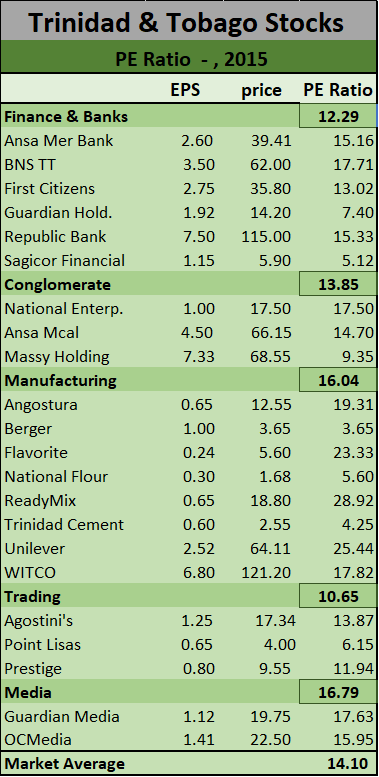The Jamaica Stock Exchange (JSE) prospectus to raise $107,865,000 is now released to the public for consideration with the issue scheduled to open at 9:00 am, Friday 5th July 2013. The Invitation is scheduled to close at 4:00 pm, Friday 19th July, subject to the right of the Company to close the Invitation at any time after it opens. The total amount of shares being made available will be 38.25 million units comprising 28 million being issued directly by the Jamaica Stock Exchange and 10.2 million by JMMB. JMMB is selling the shares they acquired when they took over the Capital Group, which put their holding at 18.18 percent, well above the threshold of 10 percent any one investor is allowed to hold as stipulated by the JSE articles.
The issue price | IC Insider computes that the stock carries a value around 10 times 2013 earnings, based on the assumption that trading activity continues for the rest of the year at the rate experienced in June. For the 12 months to December last year, profit of $93 million was reported but that figure included revenue from the sale of a board seat to Proven Wealth Management for $60 million, as well as large fee income from the purchase of Lascelles’ shares that were acquired by Campari last year and to a lesser degree the shares traded when Capital & Credit was acquired.
Existing capital | There are currently 112,200,000 (formerly 28 million) ordinary shares in issue and the new shares will bring the issued capital to 140 million units. The shares have a book value of $5.52 but earnings per share based on 2012 profit will be just over $0.83 and that figure is inflated by the non-recurring income mentioned above.
 Profit after tax amounted to $5.8 million compared to a loss of $6.1 million in 2012. For the quarter ending March, the JSE’s income rose 8 percent to reach $69.5m compared to $64.4m in 2012. Other Operating Income increased by $5.5m or 32% over the same period, primarily due to an increase of $5.3 million in revenue from the JSE regional conference. Investment income of $22 million jumped $14 million over 2012 due largely to the gains on US dollar investments as a result of devaluation of the Jamaican dollar.
Profit after tax amounted to $5.8 million compared to a loss of $6.1 million in 2012. For the quarter ending March, the JSE’s income rose 8 percent to reach $69.5m compared to $64.4m in 2012. Other Operating Income increased by $5.5m or 32% over the same period, primarily due to an increase of $5.3 million in revenue from the JSE regional conference. Investment income of $22 million jumped $14 million over 2012 due largely to the gains on US dollar investments as a result of devaluation of the Jamaican dollar.
Positives | The number of shares to be issued is relative small but shareholding is limited to 10 percent of issued shares. The preference shares which was a debt instrument was repaid and these funds replace the amounts paid out. The stock market is not at its most buoyant but with interest rates having declined below ten percent and government slashing the fiscal deficit, rates could go lower. This development ultimately makes stock market investments more attractive and drive up trading volumes and therefore fee income for the exchange. The stock exchange plans for more instruments to be traded on the exchange but there are no imminent new listings that are known. The stock exchange is showing signs of greater activity this year but it has not reached a level to ensure that the JSE makes an operating profit. The JSE will benefit from listing fee income if the value of shares rise, as the annual listing fees are tied to the value of each company’s shares that are outstanding at the start of each year.
Negatives | The number of shares to be issued will not ensure a good level of liquidity for the stock, which will keep bigger investors away. There are no rules preventing existing shareholders from selling their holdings in partially or in full thus increasing the volume that could become available to the wider public. Short term profit prospects are not exciting suggesting that the stock is not very attractively priced relative to the rest of the market. The company has an oversized board of 19, resulting in an unnecessary waste of funds and an unwieldy structure that makes it more difficult to properly run board meetings and by extension, the company.
Revenues | The Company derives its revenue from a range of sources including the JSE cess, calculated on the value of each market transaction, fees charged for listing companies at the initial stage, annually, as well as any supplementary listings, membership, transactions, the registrar and trustee fees paid to its subsidiary company JCSD, amongst others, income generated from the provision of conferences, seminars and the e-Campus. The JSE has recently entered into a Memorandum of Understanding with the Bank of Jamaica to work towards the development of a fixed income trading platform for Government of Jamaica securities and corporate bonds. It is also conducting research into the development of exchange-traded products and other exchange-related products.
In summary | Stock markets are cyclical in nature resulting in peaks and troughs in earnings flowing from bull and bear markets. At this juncture, the market is in the process of moving into a bull market. Investors who buy the shares now are essentially buying at the lower end of the market. The levels of trading currently are a fraction of what they have been in the past, so the potential is huge going forward. The change in interest rates and the focus of government on controlling the fiscal deficit will ultimately have a huge impact on the fortunes of the stock exchange. Investors should not be looking for any big pay day any time soon from this stock.







